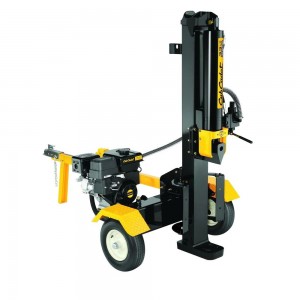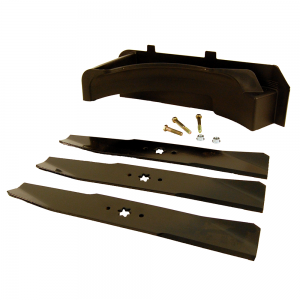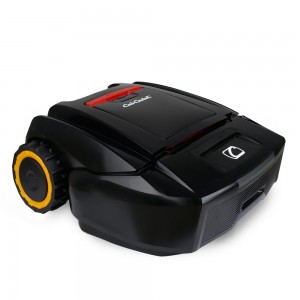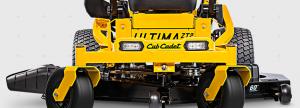 When do you need to sharpen your Cub Cadet’s blades? How can you sharpen them to get the best cutting performance? How do you get them out of the deck to begin with? Here’s everything you need to know to keep your blades delivering a quality cut.
When do you need to sharpen your Cub Cadet’s blades? How can you sharpen them to get the best cutting performance? How do you get them out of the deck to begin with? Here’s everything you need to know to keep your blades delivering a quality cut.
How Often Do I Need to Sharpen My Mower’s Blades?
– At least once per year for residential mowers. Depending on the amount of acreage they’re covering, commercial mowers may need to have their blades sharpened anywhere from monthly to weekly.
– After striking a rock or other hard object.
– After cutting plugs left over from aerating.
– Any time the blades leave behind broken leaf tips. If the edges are jagged, then the blade is tearing the grass instead of cutting it. This makes it harder for the grass to recover and leaves it open to infection.
When Do I Need New Blades?
Blades can be sharpened several times over their life, but eventually, wear or damage will make them unusable. Replace the blades if you see any of the following:
– The blade ends are getting thin.
– The blade is bent.
– There is a crack in the metal.
If you live in an area with sandy soil, you may want to consider switching to sand blades. These are made from abrasion resistant metal, so they’ll last longer.
Removing the Blades
Park the mower on a level surface and disconnect the spark plug or plugs to prevent the engine from starting.
When accessing the deck on a walk-behind mower, tilt it so that the carburetor and air filter are pointed up to prevent flooding. Blades on other mowers can be accessed by raising the deck to its maximum height.
If your deck uses the Fastattach system, simply push up on the collar and twist the blade until it slides off of the spindle.
For all other mowers, clamp the end of the blade to the deck using a blade removal tool. If you don’t have this tool, you can jam a wood block between the blade and the deck to keep the blade from spinning. Remove the blade bolt. The blade and blade adapter should slide off of the driveshaft or spindle.
Sharpening
The Cub Cadet sharpening kit includes a stone that can be mounted to any drill, or a mill bastard file can be used to remove metal without power tools. When using either tool, keep the blade clamped in a vise. The blade can also be filed with a grinding wheel. If you use Cub Cadet’s Xtreme blades, you may still want to use a mill file or sharpening stone to sharpen the smaller edges on the end of the blade.
When sharpening, maintain the original grind angle to get the best cutting performance. The finished cutting surface should be as sharp as a butter knife.
Balancing
If you have the blade balancing and sharpening kit, place the center of the blade on top of the included cone. The blade should sit level. If it doesn’t, remove metal from the corner that is pointing downward. Keep checking and filing the blade until it balances on the cone.
If you don’t have the balancer, you can still balance the blade by hanging it from a nail. If the blade is balanced, it will sit level. If it doesn’t, file some of the metal off of the side pointed down. Keep checking and filing the blade until it balances on the nail.
Installing
To install a Fastattach blade, push the blade onto the spindle, lift the collar, and turn the blade until it locks into place.
On all other mowers, lubricate the inside of the blade adapter and the crankshaft or spindle with light oil. Insert the blade adapter into the blade. The side of the blade with “Bottom” or the part number printed on it should face the ground. Using a new bolt, attach the blade and adapter to the driveshaft. Tighten the bolt to the torque specified in your mower’s owner’s manual.
Need Parts for Your Cub Cadet?
Cubparts.com ships parts and accessories for Cub Cadet across the United States and Canada. As an authorized dealer, we’re able to offer OEM parts and accessories including Xtreme, sand and mulching blades as well as sharpening kits and replacement stones. Not sure what will fit your mower? Our site can look up parts based on your equipment’s model and serial number and will show you factory information including parts diagrams. That means you can always be sure you’re ordering exactly what you need.







